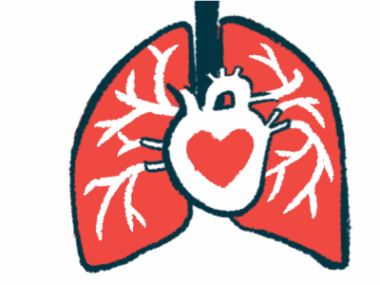AAN 2023: Muscle symptoms not always caused by granulomas
Myopathy often linked to IBM when immune cell clumps are absent
Written by |

Only about half of sarcoidosis patients showing signs of muscle disease, or myopathy, have the small clumps of immune cells in their muscles that characterize sarcoidosis, a study showed.
When these clumps, called granulomas, weren’t present with muscle symptoms, myopathy was most often linked to inclusion body myositis (IBM), an inflammatory condition without a known cause.
Patients with myopathy not related to granulomas showed higher levels of muscle damage markers and predominant finger and thigh weakness. And while half of those with granuloma-associated myopathy responded to immunosuppressive treatment, none with IBM did.
These findings highlight the importance of correctly identifying the cause of myopathy in sarcoidosis patients, as “recognition of features suggestive of alternative [causes] can guide proper treatment,” the researchers wrote.
Paul Skolka, MD, a neuromuscular disease fellow at Mayo Clinic, presented the findings at the American Academy of Neurology 2023 Annual Meeting, April 22-27, in Boston and virtually as part of a presentation titled “Symptomatic myopathies in sarcoidosis: disease spectrum and myxovirus resistance protein A (MxA) expression.”
In sarcoidosis, granulomas can build up in virtually any tissue. In about 50-80% of cases, they’re found in muscles — called intramuscular granulomas.
Only a small proportion of these patients have muscle-related symptoms such as muscle weakness or dysfunction, collectively called myopathy.
Moreover, muscle symptoms among sarcoidosis patients are not always due to the disease itself (dubbed sarcoid myopathy), but can arise from other coexisting inflammatory conditions that damage them.
Sarcoidosis and myopathy
A team of Mayo Clinic researchers sought to assess the clinical presentation of sarcoidosis associated with muscle disease and “identify the key features that should prompt clinicians to search for alternative causes of myopathy,” Skolka said.
They searched the Mayo Clinic Database between May 1980 and December 2020 for patients with any type of sarcoidosis who underwent a muscle biopsy, identifying 5,885 definite or probable patients, 21 of whom had myopathy symptoms.
Only 11 (52.4%) had intramuscular granulomas and therefore sarcoid myopathy. The remaining 10 patients had non-sarcoid myopathy, which in half of the cases, was due to IBM, a type of autoimmune muscle disease marked by muscle inflammation and weakness. Its cause is unknown.
The frequency of IBM in these patients was 85 cases per 100,000 or 4.7 times higher than in the general population, at a frequency of about 0.1–18.2 people per 100,000, Skolka said.
Along with the absence of intramuscular granulomas, features of the non-sarcoid myopathy group included predominant finger and thigh muscle weakness, which was observed in 40% of the patients, but none in the sarcoid myopathy group.
Similarly, a significantly greater proportion of those with non-sarcoid myopathy had high blood levels of creatine kinase, a marker of muscle injury (40% vs. 0%), and moderate to severe disability, as assessed with the modified Rankin Scale (mRS), at myopathy diagnosis (50% vs. 9.1%).
Two patients with non-sarcoid myopathy and one with sarcoid myopathy had myxovirus resistance protein A (MxA) in their muscle fibers, the presence of which is a hallmark of dermatomyositis, a rare inflammatory condition that causes muscle weakness and skin rashes. A previous study showed MxA levels were elevated in skin tissue from people with cutaneous sarcoidosis. No dermatomyositis-specific antibodies were detected in the patients tested for them.
“A larger, multicenter study of MxA [levels] in sarcoidosis patients with symptomatic myopathy is necessary to validate our observation and to elucidate the … mechanism underlying this finding,” the researchers wrote.
Immunosuppressive therapies led to at least a 1 point improvement in mRS scores, indicating less disability, in five patients with sarcoid myopathy (50%), none with IBM, and all of three with non-sarcoid myopathy.
The findings show IBM is “the most common cause of non-sarcoid-related myopathy among sarcoidosis patients” and that identifying the right cause of myopathy has important implications for treatment, according to Skolka.
“A correct diagnosis of IBM prevents an unnecessary exposure or escalation of immunosuppressive therapy in the absence of active sarcoidosis,” Skolka said.






